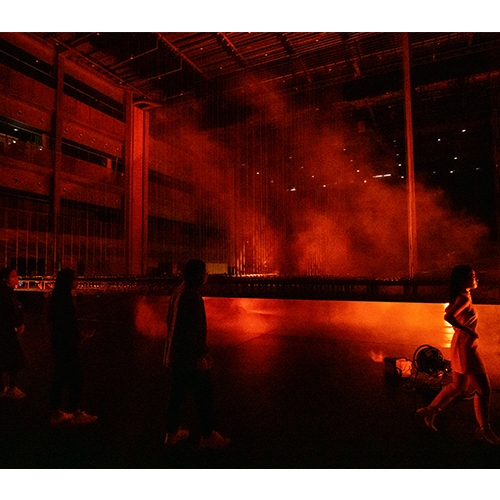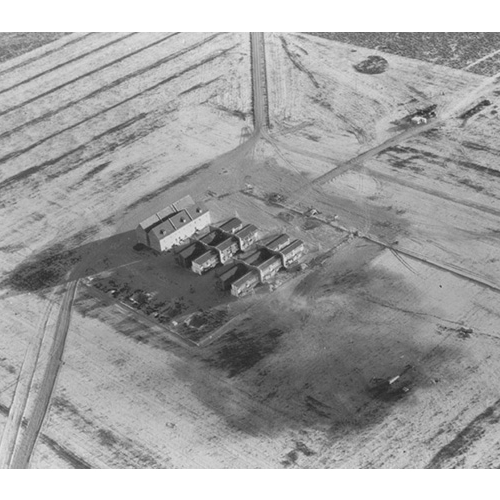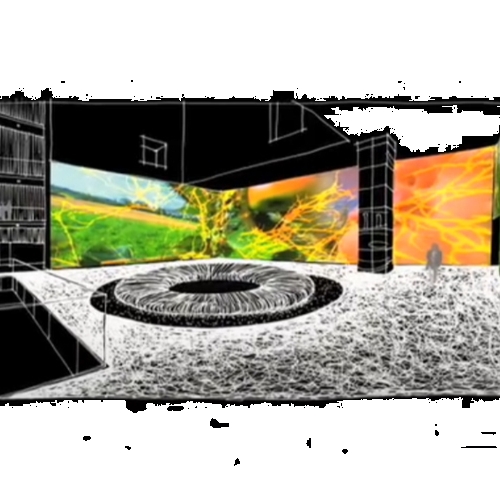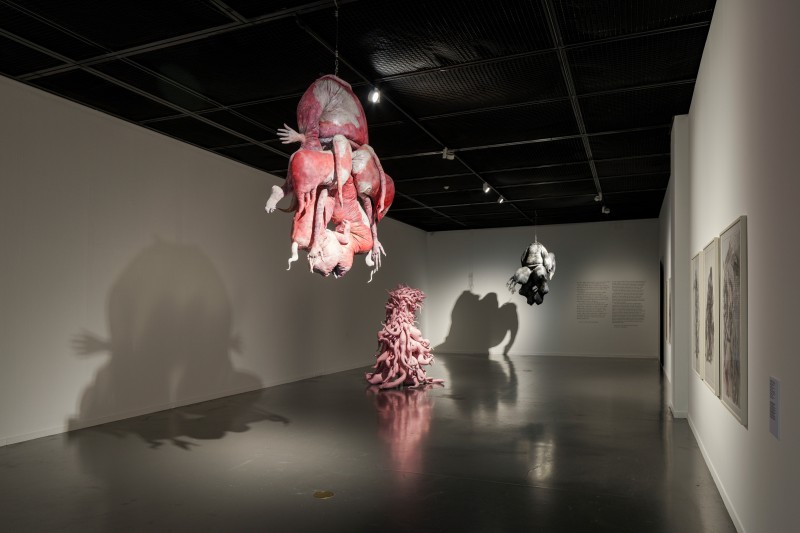(upper image) aerial view of ‘Japan Village’ / ⓒUS Army_ Image courtesy of Wikimedia Commons
1.
Let's conduct a simple thought experiment. You are staying abroad for a project. One day you watch the news; a war has broken out in South Korea. Bombing and fighting have overtaken Seoul, and the borders are blocked. Your passport is now just a piece of paper, and you are a refugee.
The Institute for Human Rights of International Organisations in exile calls you. The institute, which is collecting evidence of war crimes, gives you several photos of Seoul. They are of familiar streets and buildings, but they remain somewhat unfamiliar. The apartment complex is in ruins, the bridge connecting the Han River is cut off, and Gwanghwamun Square is full of burnt and broken debris. The institute asks you to record the exact location of the place in the picture and the purpose of the building.
How accurately are your memories? If the building in the alleyway you walk through every day one day disappears, can you remember how many floors there were in this building, what the entrance looked like, and what its purpose was? What is the first thing that comes to your mind when you think of this space?
2.
You might think it's unlikely, but Bosnian writer Aleksandar Hemon experienced precisely this set of circumstances. Born and raised in Sarajevo, Hemon left for Chicago for a training programme in 1992, and shortly after that, a long and terrible civil war broke out in Bosnia. He worked at the Institute for International Human Rights Law, which collects evidence of war crimes and checks photographs of ruined cities. There were a few people in the picture but somehow, he writes, it felt like identifying the corpse. There were buildings that he couldn't remember no matter how hard he tried, and others were clear enough to remind him of its smell. That's precisely how he remembers the building on the corner when he waiting for his girlfriend, Renata, whom he met in high school. Renata was always late, and when she was, Hemon went to the supermarket on the first floor to buy candy or cigarettes. The moment he looked at the photo, the smell of tobacco leaves, which had he rolled while leaning against its wall, came to his nose as if they were right before him.
I conceived of a novel based on the experiences of Hemon. The protagonist is given the task of remembering the city in which he once lived. He is obliged to recreate the town almost like the real thing, beyond marking and recording the purpose or location of the building. For this purpose, the agency offers a vast site in an empty desert. Architects, urban planners, landscape experts, contractors, and other departments back him up. They are ready to build a city in the desert according to his memory. All that's left now is to recall the space in the memory.
3.
Pain is connected to where people live, claims David Shields. People go on trips to escape places and objects that seem to have absorbed all of their energies or sadness. The protagonist of my novel also finds out that there is a certain sadness in the landscape of the city that he tries to remember, the details he wants to reproduce, but the void does not come up in the latter half of the novel. The reasons behind this sadness, along with the details of the space, have been forgotten. Therefore, the protagonist realises that recreating a city and a space is the act of processing forgotten memories, oblivion, trauma, and loss.
It sounds like this has been going pretty well, but in fact, I haven’t written a single line of this novel. There is a plausible title, A Sniper in An Alley, but honestly, I don't know if I can write it. There are plenty of reasons why this hasn’t gone any further, such as low fees, tight schedules, disappointing book sales, but the biggest problem is the ambiguous nature remembering space. I'm not sure what it is to recollect a space, in simple terms. Does one recall the physical conditions of a place or the actions or events that took place there? If it was just a matter of reconstructing the building, the problem might be easy. But is it possible to build the same building? If possible, can that place be understood as the same space if it is reproduced in different times and places? Besides, what is the reason for such a reproduction? Everything is destroyed and forgotten. Nevertheless, we try to remember and reproduce. When a space becomes the object is there some other special reason?
4.
In 1943, Czech architect Antonin Raymond was commissioned to design the ‘Japan Village’ project sponsored by Standard Oil and supported by the US Army. The project is to build traditional wooden houses and streets similar to those found in Tokyo, in the desert of Utah. In 1921, Raymond went to Tokyo to establish the Imperial Hotel with Frank Lloyd Wright and later fell in love with the country’s charm. He opened an architectural office in Tokyo, lived there for 20 years, and returned to the United States only after the worsening of World War II. As such, no one was more qualified than Antonin Raymond to build Japan Village.
Of course, the US Army did not build Japan Village to provide a place for Japanese people to love with nowhere else to go. Japan Village was constructed to ascertain the performance of incendiary bombs like the M-69. In a word, it was built to be destroyed. It is understood that they replicated the same details inside the house, such as tatami floors and paper sliding doors, to grasp the performance accurately.
Later, Raymond admitted that he knew the project's nature and said that it was an inevitable choice in order to end the war quickly. However, the bombing of Tokyo was catastrophic and the greatest massacre in all of World War II. General Curtis LeMay, who operated the operation at the time, is famous for saying, ‘There are no innocent civilians’, responding to comments from those concerned about civilian deaths. In Stanley Kubrick's movie, Dr Strangelove, the mad war fanatic general was modelled on LeMay.
Antonin Raymond returned to Japan after the war. It is not known whether the reason for his return was to reflect upon his mistakes, his love for Japan, or to work on the ruins of Tokyo. It is not known what the Japanese knew of what he did at the time. Now, we are not able to ask whether he was hypocritical or reflecting upon events more seriously.
What's interesting to me is that he had to remember and reimagine the space over and over again: first destruction, then reconstruction. The examples of Hemon and Raymond reveal that the act of recollecting a space cannot be merely physical. The memory of space is always connected with ruins, ruptures, destruction and migration.
Jung Jidon
Jung Jidon studied Film and Creative Writing. He published a collection of short stories, novels, critics, and essays such as Like I Fight, We shall survive in the memory of others.
42













